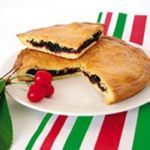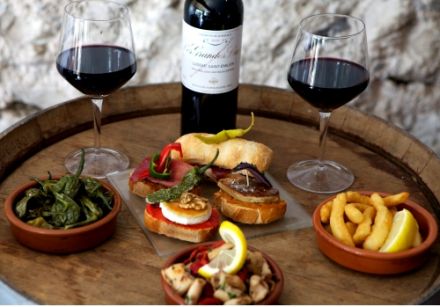 |
Flavors of Basque Country spiced with Espelette
With the harvesting of the chillis comes the main event of the autumn, La Fete du Piment in Espelette which takes place this year on 23 and 24 October. Just 17 miles from Biarritz airport, the village of 1600 inhabitants welcomes 15,000 visitors annually in their quest to pay homage to the Espeletako biperra. Thousands of bright red chillis festoon Espelette’s buildings and Saturday is devoted to selling and tasting them, culminating in a ball in the evening. At 10am on Sunday, the Blessing of the Pepper Harvest is celebrated in the 16th century church of St Etienne where chillis were once burnt as incense. The brotherhood of the Piment d’ Espelette then parades to the town hall accompanied by three-holed flutes and other Basque instruments. The chillis’ AOC status limits their cultivation to ten villages in the area and there are currently some 55 producers. At the Domaine Xixtaberri in nearby Cambo les Bains, one family of growers owns more than 30,000 chilli plants and runs a friendly B&B specialising in good old-fashioned Basque cuisine.
At the Gateau Basque museum in Sare, one of "les plus beaux villages de France", it’s possible to earn the title of Defender of Basque Culinary Traditions by taking pastry chef Bixente Marichhular’s beginner’s course in the art of patisserie. The museum itself is a tribute to the Basque cake (biskotxa) that originated in Cambo in the Labourd province in the 17th century. Once made in the shape of little pigs, the gateau basque was transformed by the addition of jam - mulberry, fig, sloe or cherry depending on the season - and later custard in the 19th century. The pastry guide welcomes visitors for tasting sessions in the museum’s Basque kitchen or sukalde.
Bon appétit from the Basque Country!





Photos: Ham and Espelette Pepper - Pierre Oteiza
Photo below (tapas): OT Basque Country / Pierre Carton

-

 Recipes
Recipes
-

 Products
Products
-

 Entertaining
Entertaining
-

 Chefs
Chefs
-

 Hints & Tips
Hints & Tips
-

 Glossaries
Glossaries








